The Segments Page
The Segments page displays a list of all available segments in your LiveRamp account.
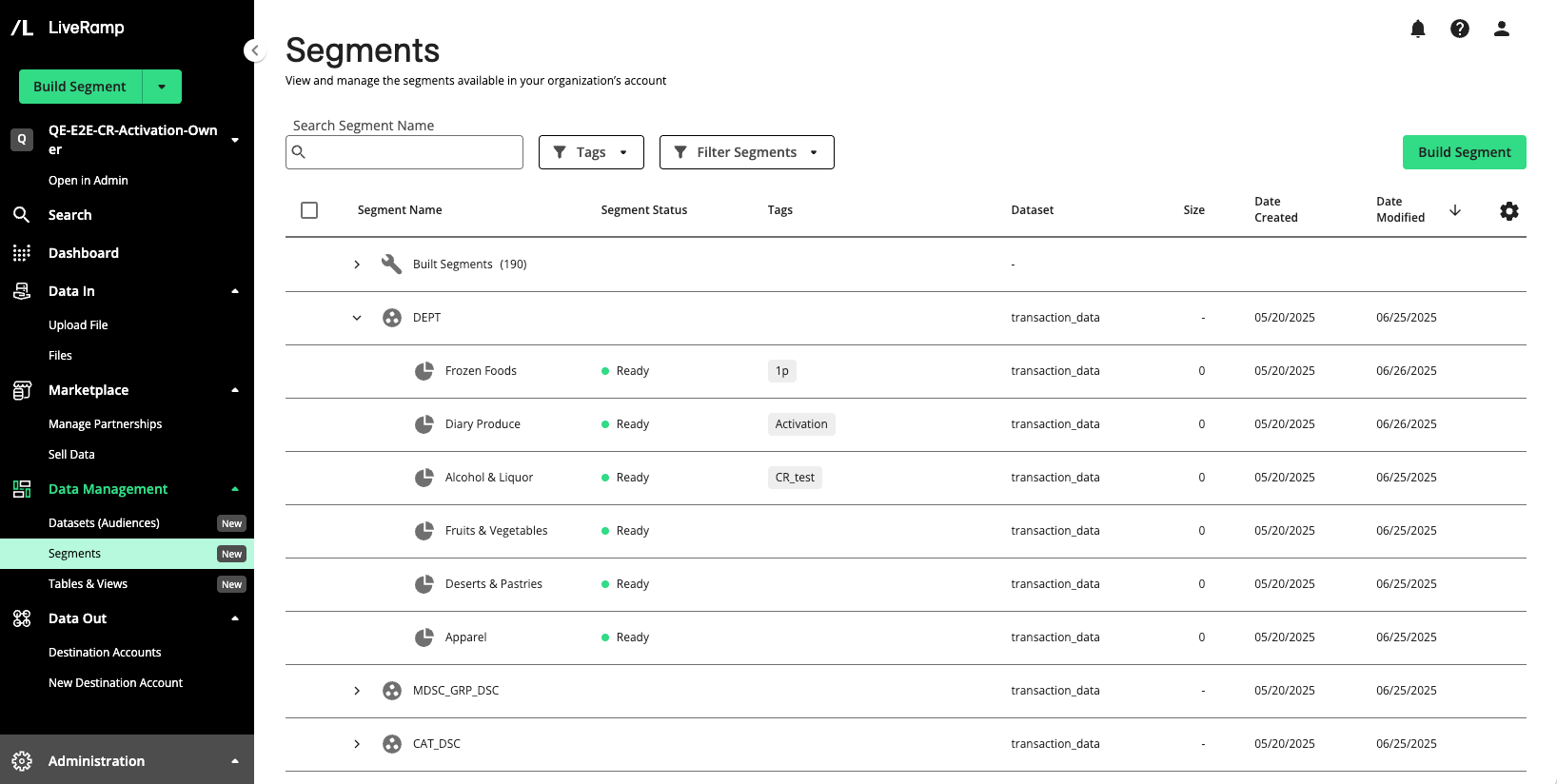
Note
All segments you’ve built in Connect will be grouped under the “
 Built Segments” system folder. For information on building a segment, see "Build a Segment".
Built Segments” system folder. For information on building a segment, see "Build a Segment".If you were previously using an earlier version of Connect, the asset management model in Connect 2.0 is somewhat different. For more information, see "What's Different With Asset Management 2.0".
To access the Segments page, select → from the navigation pane.
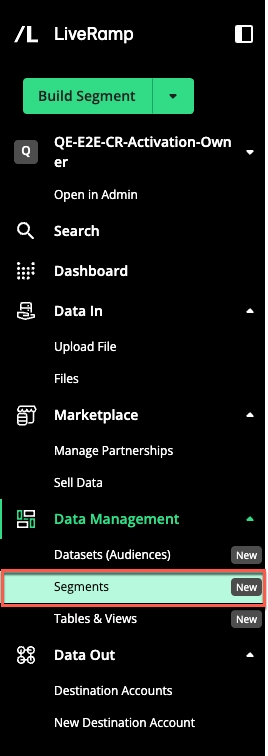
Columns Available on the Segments Page
The Segments page table displays the following columns:
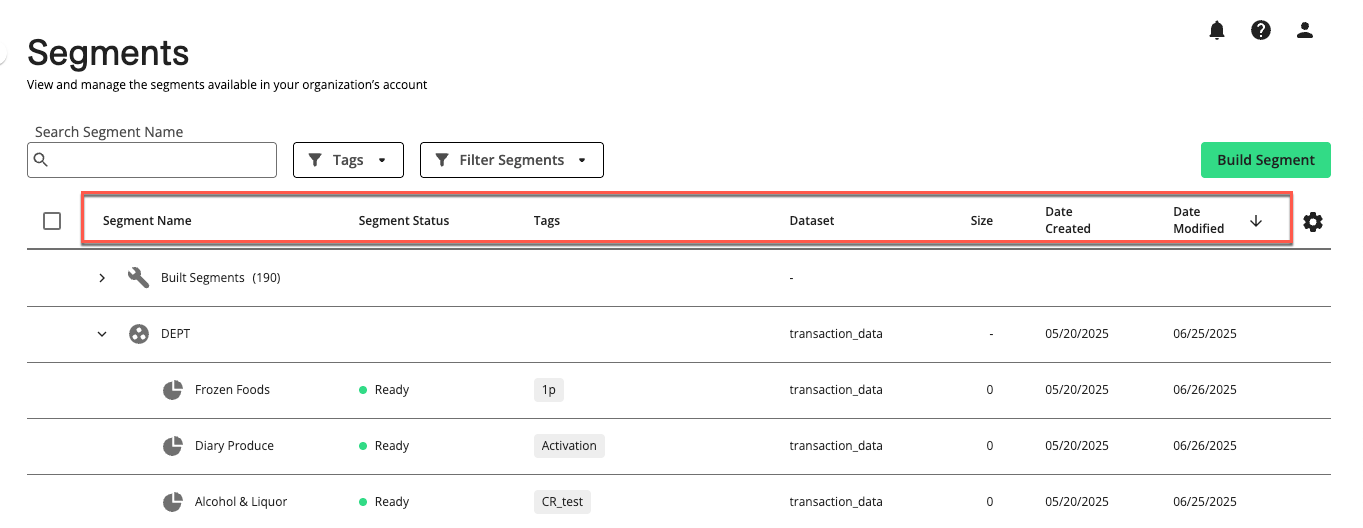
Note
To change the columns that are displayed, column order or width, the table sort order, or the table row spacing, follow the instructions in "Changing the Table Display".
Column Name | Description |
|---|---|
Segment Name | The name of the segment. You can use this for searching, sorting, or filtering segments. |
Segment Status | The status of the segment. See “Segment Statuses” below. |
Tags | The names of any segment tags that have been added to the segment. You can use this for searching, sorting, or filtering segments. |
Dataset | The name of the dataset the segment is contained in. |
Size | The size of the segment in maintained RampIDs. |
Date Created | The date the segment was created. |
Date Modified | The date the segment was last updated. |
Activation Fees | Whether this segment has activation fees (this column is not displayed by default). |
Owned By | The name of the organization that owns the data in the segment (this column is not displayed by default). |
Ownership | The ownership of the segment:
|
Search for and Filter Segments
You can search for segments in the following ways:
Full name: Enter the full name of the segment. The search ignores underscores (_).
Partial name: Enter parts of the segment's name. You do not have to enter words in the exact sequence.
Asterisks (*): Use asterisks (*) to replace parts of the segment's name. For example, you can type "*male" if you are looking for assets whose names end with "male".
If multiple segments match your search, they will be listed based on relevance.
If you added tags to your segments, you can use the Tags filter to filter the Segments table by those tags.
You can use the dropdown to filter the Segments table by:
Activation Fees
Ownership
Segment Status
Date Created
Date Modified
Owned By
Audience Dataset
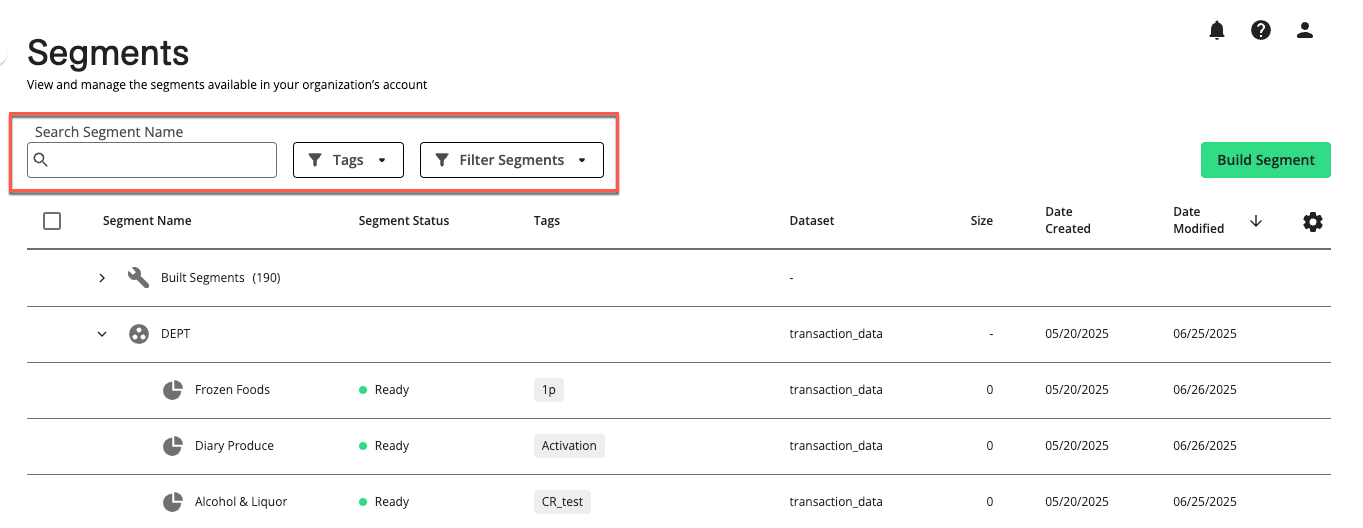
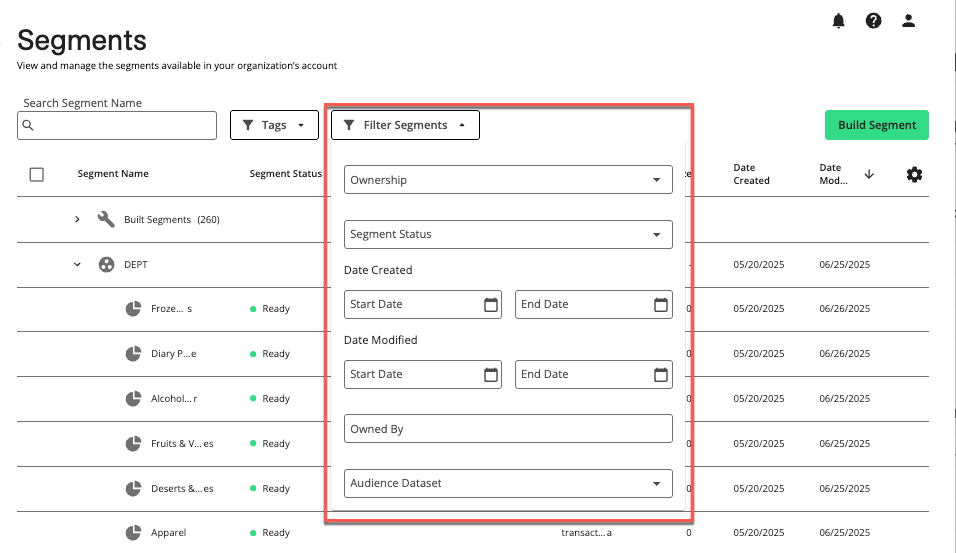
Segment Statuses
The segment status can be one of the following:
 Creation Failed: An error occurred while creating the segment:
[error description from Ingestion]
Creation Failed: An error occurred while creating the segment:
[error description from Ingestion] Invalid:
Invalid:For deleted data: The segment is invalid because the data used to create it is no longer available. Any activated segments built from this data will no longer deliver to destinations.
For permission revoked or expired: The segment is invalid because the permission for the partner data used to create it has expired or been revoked. Any activated segments built from this data will no longer deliver to destinations.
 Ready: This segment is ready to be used.
Ready: This segment is ready to be used. Updating: This segment is being updated or refreshed.
Updating: This segment is being updated or refreshed.Not Available: The status for this asset is not available in the system. Check again later. If the problem persists, contact your LiveRamp representative.
Actions You Can Perform From the Segments Page
You can perform a number of actions from the Segments page:
Build a segment: You can build a segment from the table attributes, tables, and segments in your account by constructing a series of filter rules, using individual filters and filter groups. Click and follow the instructions in “Build a Segment”.
View side panel details: Click a segment row on the Segments page to open the segment side panel, where you can view information about the segment, including segment details, permissions, and activity history. For more information, see "View Segment Details".
Open full details page: Double-click on a segment row to open the full details page, where you can view segment details, segment rules, overlap, permissions, and activity history. For more information, see “View Segment Details”.
Manage segment tags: You can add custom tags to the segment by selecting the More Options menu (
 ) of the desired segment row and clicking . These tags can be used for searching, sorting, or filtering the segments available to you.
) of the desired segment row and clicking . These tags can be used for searching, sorting, or filtering the segments available to you.Overlap data assets: You can overlap first-party dataset assets with other first-party dataset assets. For second-party dataset assets originating from a clean room, you can only overlap other assets within that dataset. Check the check boxes for the assets to overlap and then click . For more information, see "Overlap Data Assets".
Delete a field: You can delete a field and its associated segments by selecting the More Options menu (
 ) of the desired field row and clicking .
) of the desired field row and clicking .


